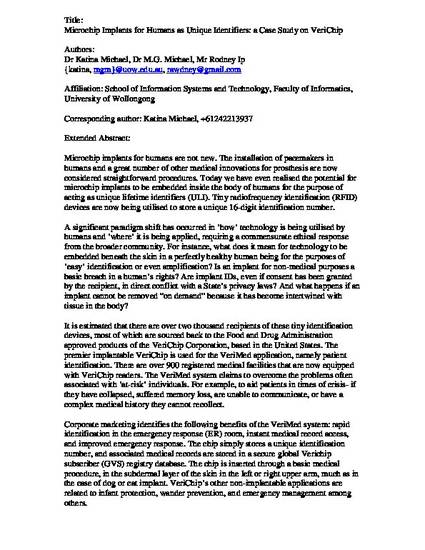
Contribution to Book
Microchip implants for humans as unique identifiers: a case study on VeriChip
Faculty of Informatics - Papers (Archive)
RIS ID
24803
Publication Date
22-4-2008
Abstract
Microchip implants for humans are not new. The installation of pacemakers in humans and a great number of other medical innovations for prosthesis are now considered straightforward procedures. Today we have even realised the potential for microchip implants to be embedded inside the body of humans for the purpose of acting as unique lifetime identifiers (ULI). Tiny radiofrequency identification (RFID) devices are now being utilised to store a unique 16-digit identification number.
Grant Number
ARC/DP0881191
Additional Grant Number
http://purl.org/au-research/grants/ARC/DP0881191
Disciplines
Citation Information
Katina Michael, M G Michael and Rodney Ip. "Microchip implants for humans as unique identifiers: a case study on VeriChip" (2008) Available at: http://works.bepress.com/kmichael/23/

Michael, K., Michael, M. G. & Ip, R. (2008). Microchip implants for humans as unique identifiers: a case study on VeriChip. In N. Manders-Huits (Eds.), Conference on Ethics, Technology, and Identity (ETI) (pp. 81-84). Delft: Delft University of Technology.